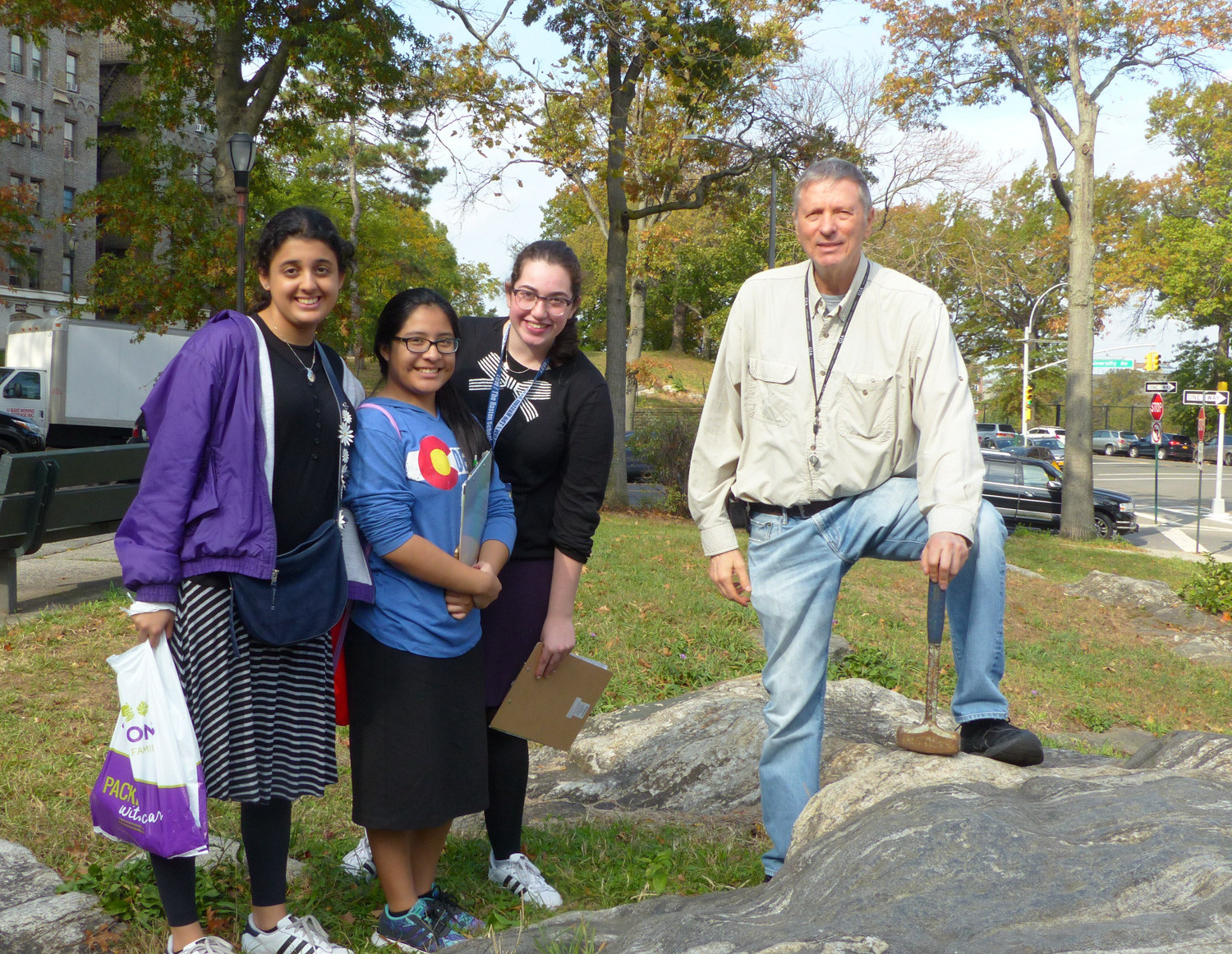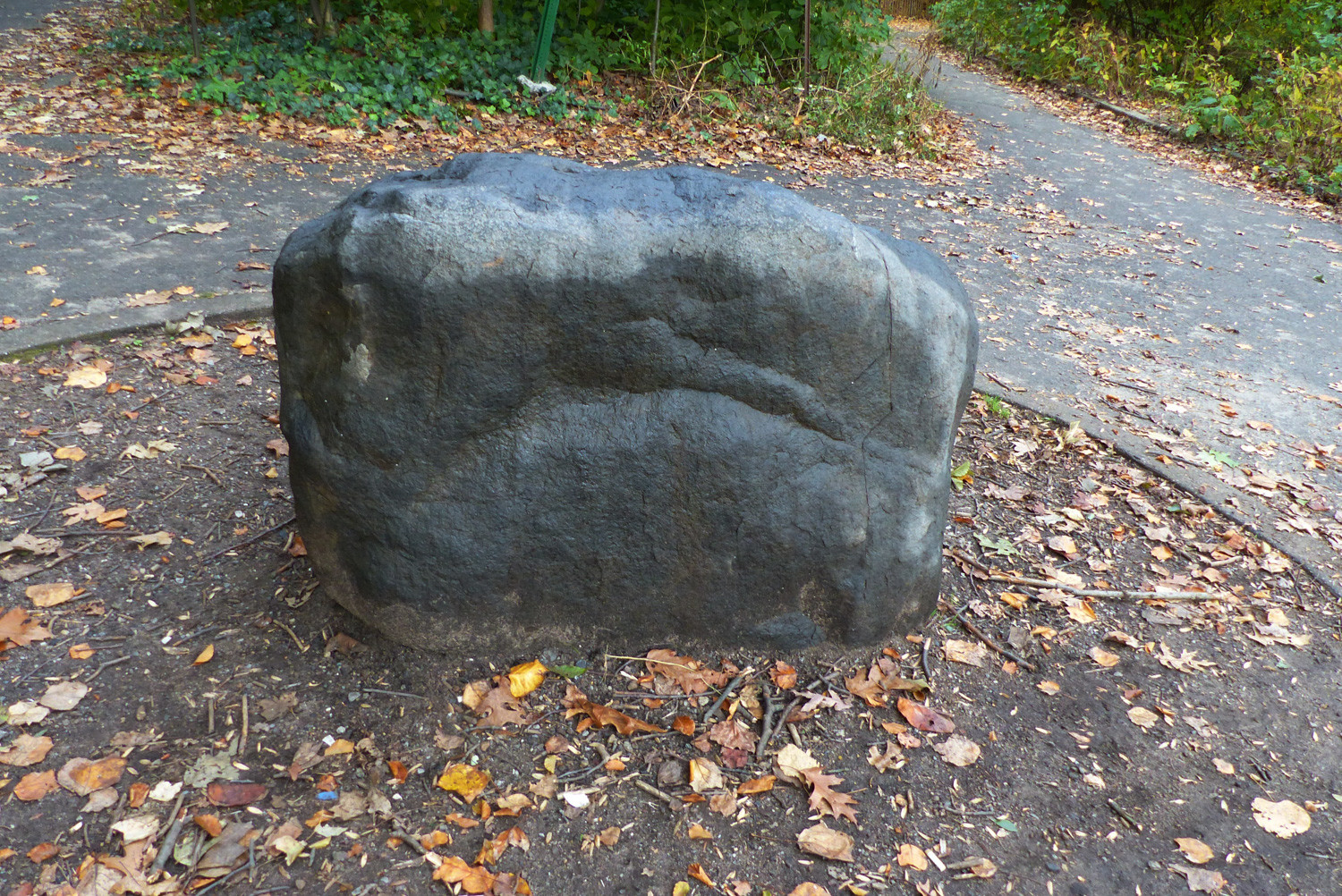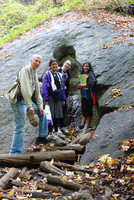Riverdale’s not boring — studying geology with Dr. Feldman
Strike and dip! Strike and dip!
This was the constant refrain on a pleasant autumn morning as I accompanied Howard Feldman’s geology class from Touro College on a hike through Inwood Hill Park, Riverdale and Kingsbridge Heights.
But what do these terms mean? Let us first consider the fact that while our houses stand on level ground and we generally walk on smooth, flat surfaces, the Earth’s understructure and its forces tend to distort and twist rocks, creating jagged mountains.
These terms are used by geologists to describe the world’s contours in 3-D. “Dip” refers to the angle the rock tilts off horizontal — or simply stated, how an angled rock differs from one lying flat.
For example, a 0-degree dip is a flat surface and a 90-degree dip means the rock is standing vertically, or straight up and down. It is also important to note which compass direction the rock is dipping.
The “strike” is a measurement showing the orientation of the rock on the surface.
We entered Inwood Hill Park at West 207th Street and scurried after Dr. Feldman for almost three kilometers up and down several hills. There I was introduced to the famed Manhattan schist formation, formed during the Lower Paleozoic Era — approximately 450 million years ago. Sparkling with mica, created from mud under intense heat, Manhattan schist makes New York City skyscrapers possible since such buildings need to be anchored in solid bedrock.
You may notice that there are tall skyscrapers in Midtown and downtown, but buildings are lower in between. In the areas of taller buildings, the Manhattan schist is close enough to the surface to provide the necessary anchorage, while the area in between is a former valley filled with sediments deposited by water and departing glaciers and not strong enough.
Glaciers seem far away in both time and space. However, 12,000 years ago, there were glaciers covering our area. As we walked through the park, we saw two bits of evidence for them.
In an area called “The Clove,” we passed two sets of small potholes carved into the rock. These were created by the circular rotation of glacial water using rock flour (rock pulverized by grinding as the glacier moved south) as the abrasive grit. These formations were first discovered by Inwood resident Patrick Coghlan in 1931.
The second glacial clue was a rounded boulder sitting all by its lonesome quite unlike any of the cliff rock nearby. These are called glacial erratics, and they are the remains of large rocks that are pushed in front of a moving glacier. They are polished and rounded by the glacial movement, and then are abandoned willy-nilly when the glacier recedes.
Since they have been dragged from afar, they do not resemble their new neighbors. In this case, the erratic is composed of Palisade diabase, an igneous (volcanic) rock.
Across Seaman Avenue is Isham Park, and there we observed outcrops of Inwood Marble, the second of the three rock types underlying New York City created in the late Cambrian/Early Ordovician some 500 million years ago. The original limestone, created from huge quantities of tiny-shelled ocean creatures, metamorphosed due to great heat and pressure.
To determine whether a rock has a carbonate base — meaning the shells are composed of calcium carbonate — just drip one drop of diluted hydrochloric acid on a fresh surface and see if it fizzes.
Crossing into Riverdale, we are presented with a new formation. This is Lower Paleozoic Fordham gneiss, which forms the Riverdale and Grand Concourse ridges, and is the oldest of the three rock types. To see an example for yourselves, just go to 3671 Hudson Manor Terrace.
North of the building, behind a fence, is an outcropping of Fordham gneiss. The bands are made up of alternating light stripes of feldspar between darker biotite mica.
To test your new knowledge about strike and dip, the strike of this formation is N30E (30 degrees off north toward east) and the dip is 85SE (tilted 85 degrees toward southeast). Further examples can be seen at Reservoir Oval and West 197th Street, which has little pools of water on top of the outcropping where softer stone has eroded creating cavities in the rock.
There appears to be particular interest in my columns on geology. If there is enough serious interest, we could form a Riverdale geology club with paid tours as time and weather permits.
If you would like to be included in such a club, please contact me at greenscenesura@gmail.com.
Have a thought or comment for Sura Jeselsohn? Email her at greenscenesura@gmail.com.











